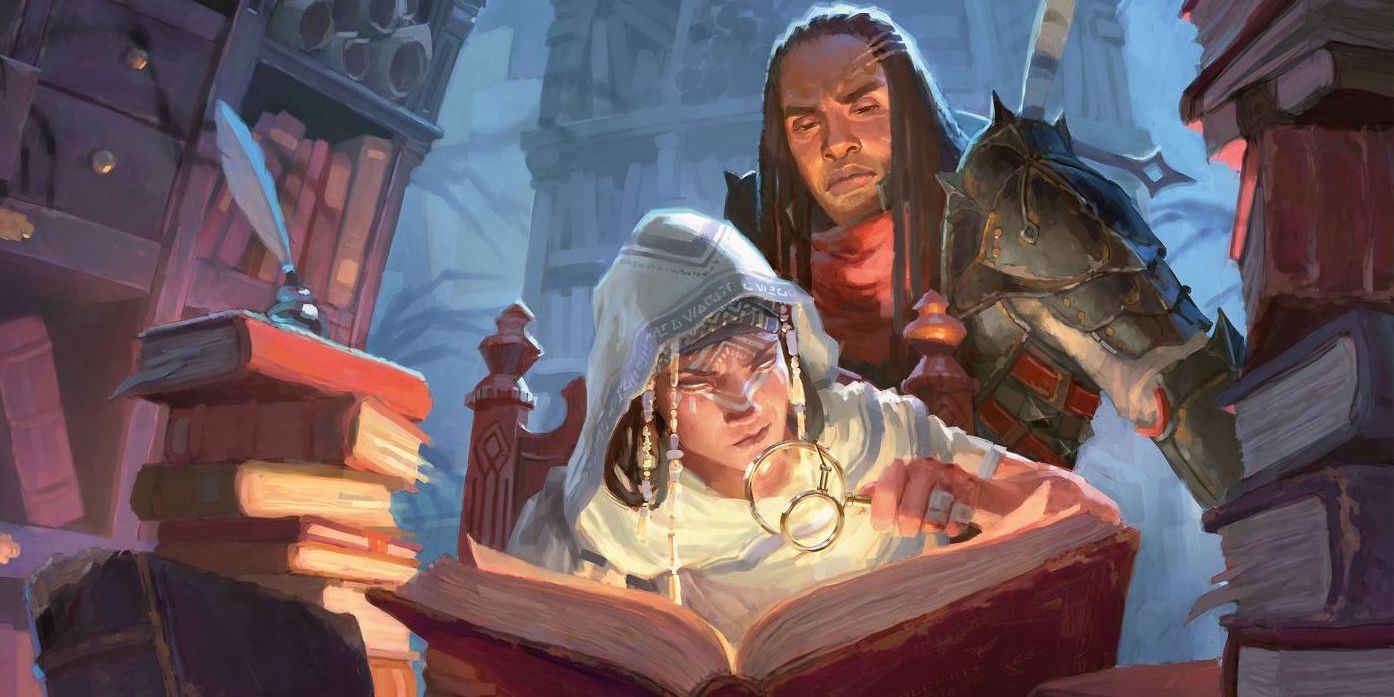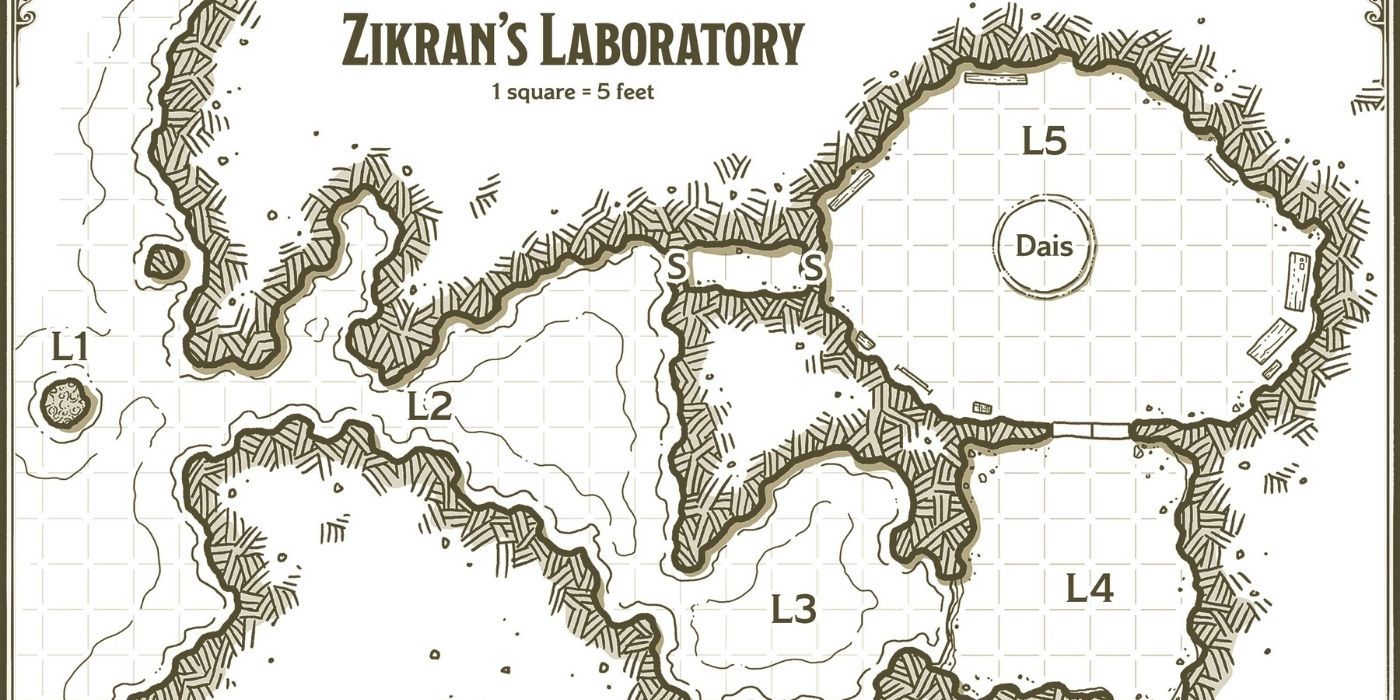Warning! The following contains spoilers for Candlekeep Mysteries, available now.
The most recent Dungeons & Dragons campaign book, Candlekeep Mysteries, includes seventeen different one-shot mystery adventures. Each adventure was designed by a different writer with a unique plot and environment, ensuring that there is something for every play style.
These offer plenty of versatility for DMs who can use the one-shot campaigns either on their own or to bridge the stretch between the end of a longer ongoing adventure story and the start of the next. The various mystery adventures are designed for players ranging from first level all the way up through sixteenth level and are all connected to the legendary library of Candlekeep in the Forgotten Realms. But they are also all fairly adaptable, and so DMs should be able to scale a campaign to meet the needs of different level players.
Given the disparate nature of the many adventures in the book, there is not always a clearly designated beginning point for many of them. While this requires a DM to do additional prep work, DMs help tailor-fit each mystery to meet their needs. In fact, Candlekeep Mysteries has a subsection at the front of the book called "Dissecting the Adventures" that encourages this.
Often, the limitations imposed on an adventure provide the structure needed to make helpful changes. If a DM chooses to have an adventure set in Candlekeep, characters must donate a rare book to the massive library. This is actually a great opportunity to include an NPC or roleplaying encounter that will help guide players toward their goals while also providing someone they can rely on for support as needed -- especially if they are lower-level players. It is also an opportunity to furnish players with magic items that might help them later on.
It helps to analyze specific adventures to see how best to scale things up or down, and there is no better place to start than with "The Canoptic Being," written by author Jennifer Kretchmer, which is probably the most talked-about adventure in Candlekeep Mysteries. In recent years, Dungeons & Dragons has worked to become more inclusive, taking into account the diverse experiences of different players. Kretchmer, who uses a wheelchair, designed an adventure with a wheelchair-accessible dungeon, which has led to the creation of more characters who use a wheelchair. "The Canoptic Being" is designed for an adventuring party of level 12 players but can be adapted for other levels. Early on, players must find and enter a portal behind a locked door. Bypassing the door requires a successful Dex or Strength skill check of 25. Many of the adventures begin with a similar skill check, so an easy way to update encounters is to adjust the skill checks' difficulty. Similarly, this particular door has an "alarm" spell cast on it. Adding or removing such magical barriers can be a useful tweak.
Of course, the easiest way to scale an adventure is to alter the stat blocks of enemies. A great example of where to apply this is in "Zikran's Zephyrean Tome" by Taymoor Rehman. If players succeed in their mission, a djinn will grant one wish -- arguably the most coveted spell in the entire game. Much of the story takes place in the ancient ruins of a cloud giants' keep, where they encounter the ghosts of deceased cloud giants as well as a powerful arcane spellcaster. It can be helpful for a DM to swap out parts of the stat blocks, altering the hit points, armor class, attacks, resistances and available spells. One way to do this is to swap these out for the stats of other Monster Manual enemies, which can add a sense of surprise as monsters behave unexpectedly. It is also possible to add or remove enemies or use totally different ones.
Swapping out one enemy for another also ties into another helpful tweak: altering maps. Adding or removing parts of a map can make it play much smoother or provide additional challenges. Maybe the cloud giants ghosts are actually the ghosts of much tougher storm giants, and their keep has an added temple room honoring their god Anman where a ceaseless thunderstorm rages. You could also replace the giants with an old Illithid colony, where a sickly elder brain pulsates with psychic power in a gelatinous pool surrounded by vicious mind flayers and their thralls. Changing a map does not require altering the enemies, but it can help.
A DM might choose a specific adventure despite its level because it will be a better fit for their players. "Kandlekeep Dekonstruktion" by Amy Vorpahl is a hilarious caper perfect for players of any age. Characters race against time to stop a cult from achieving their over-the-top master plans before it's too late. It is also designed for a party of level nine adventurers. Early on, players may cast "speak with dead" to interact with a dead NPC. Providing magic items in advance can help ensure lower-level players don't miss opportunities when adventures include these choices. Similarly, there is a part with acid that would kill lower-level players. Such environmental dangers can be added, removed, or altered wherever it will help.
The point of the adventures in Candlekeep Mysteries is that each one can be adapted however is most helpful. A major reason for the book's appeal is its versatile nature. By making these changes, DMs should be able to adjust any adventure to run with players of a different level or incorporate the various mysteries into their own campaigns.



